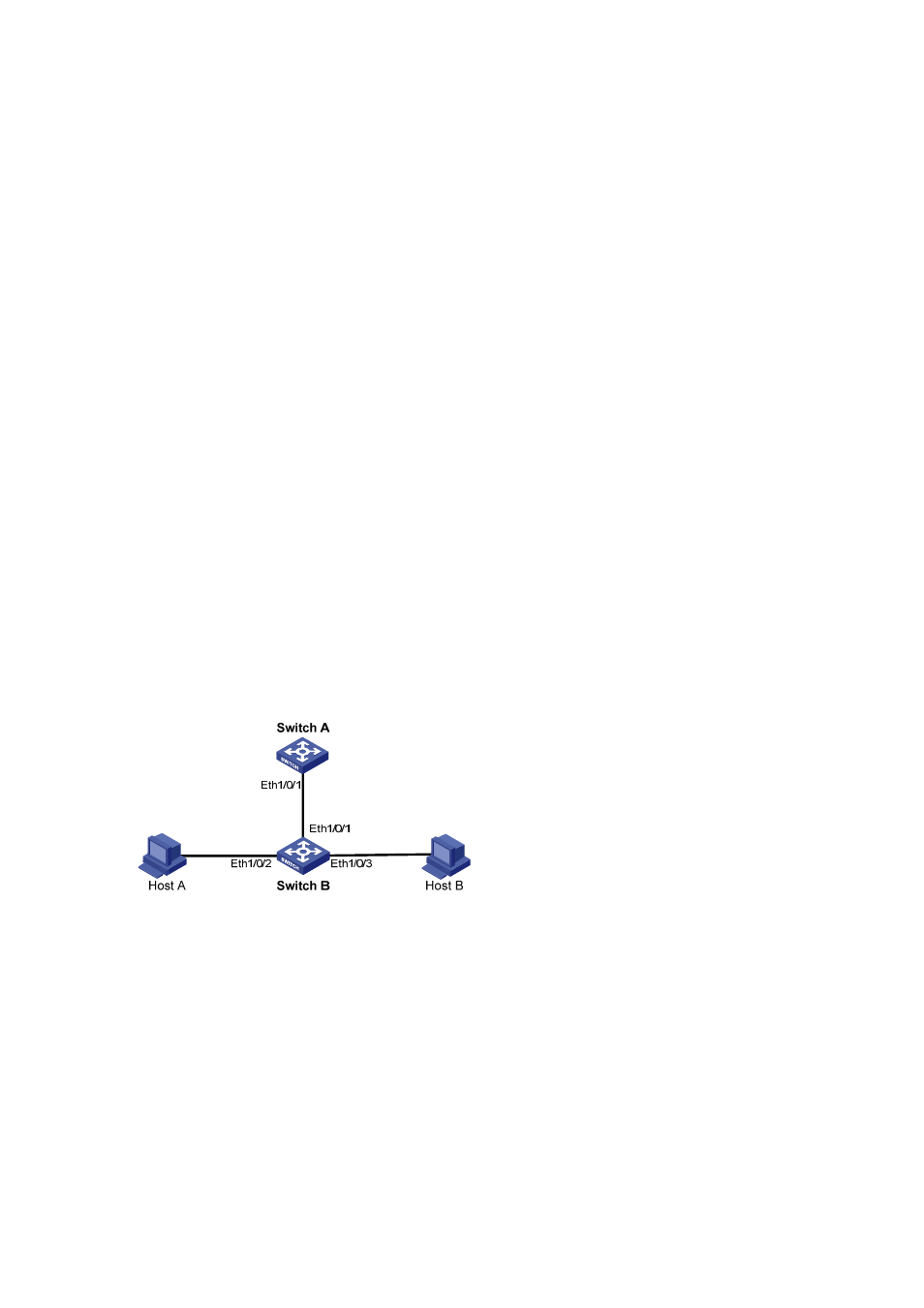Local proxy arp – H3C Technologies H3C S3600 Series Switches User Manual
Page 615

3-2
Host A and Host D are on different sub networks. When Host A (192.168.0.22/16) needs to send
packets to Host D (192.168.1.30/16), because the mask of the two hosts are both 16 bits, Host A
regards Host D to be on its directly connected sub network, and thus Host A will broadcast an ARP
request to request the MAC address of Host D.
z
When the common proxy ARP feature is not enabled on the switch, because Host A and Host D are
in different VLANs, the ARP request sent by Host A cannot reach Host D, and the two hosts cannot
communicate.
z
With common proxy ARP enabled on the switch, when VLAN-interface 3 receives the ARP request,
if the switch finds a route to the destination IP address (encapsulated in the ARP request) in the
routing table, the switch sends host A the MAC address of VLAN-interface 3 in an ARP response
(with the source IP address being the destination IP address of the ARP request). After receiving
the ARP response, Host A creates an ARP entry, in which the destination IP address is the IP
address of Host D (192.168.1.30/16), and the MAC address is that of VLAN-interface 3. The
following packets sent from Host A to Host D will all be sent to VLAN-interface 3 of the switch, and
then the switch forwards the packets in Layer 3 to Host D, so as to realize the Layer 3 connectivity
between Host A and Host D.
If IP hosts on a network have no default gateway configured or have no routing capability, you can use
common proxy ARP to address this issue.
Local Proxy ARP
The following gives a local proxy ARP application scenario. Host A and Host B belong to the same
VLAN, and they respectively connect to Switch B’ Layer 2 ports Ethernet 1/0/2 and Ethernet 1/0/3,
which are isolated at Layer 2. To allow the two hosts to communicate at Layer 3, you can enable local
proxy ARP on Switch A.
Figure 3-2 Local proxy ARP application
In one of the following cases, you need to enable local proxy ARP:
z
Hosts connecting to different isolated Layer 2 ports in the same VLAN need to communicate at
Layer 3.
z
After Isolate-user-VLAN function is configured on a device attached to a S3600 series Ethernet
switch, hosts belonging to different secondary VLANs need to communicate at Layer 3.
